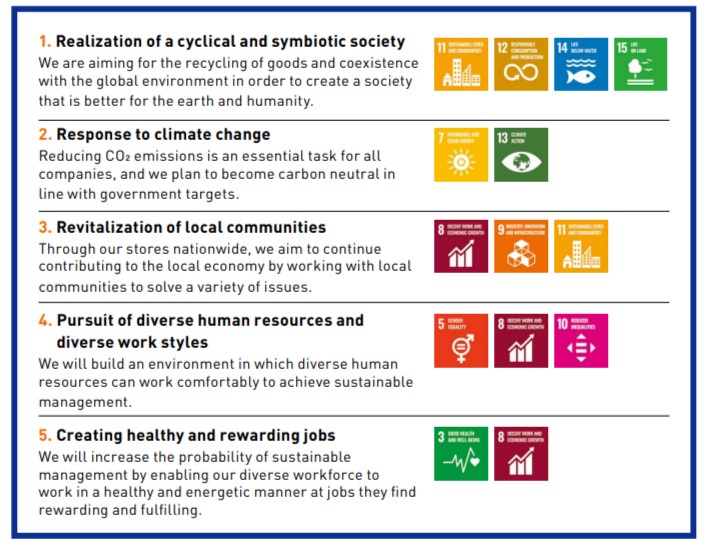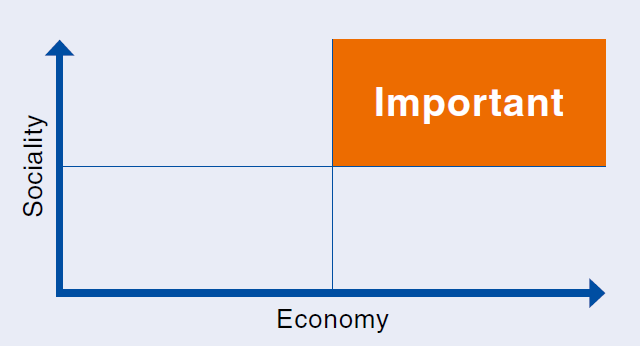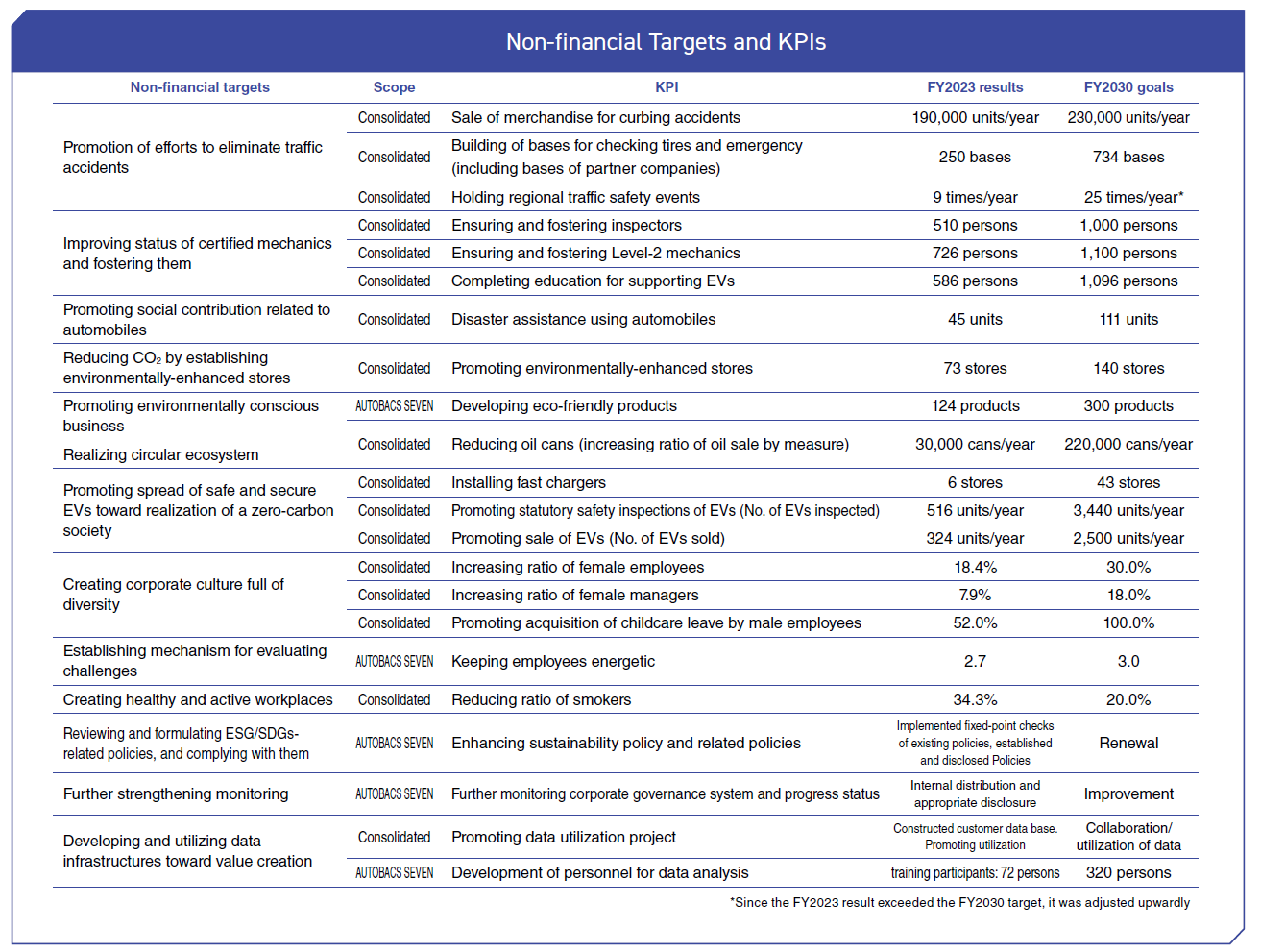We have identified four materiality issues that we need to resolve, so that we can create a safe, secure, and gentle society in which people, cars, and the environment exist in harmony, as a company that is recognized as being professional and friendly. We identified these issues by considering international frameworks such as the SDGs, ISO 26000, and GRI standards, as well as exchanging opinions with external experts and obtaining the approval of the Board of Directors.
1. Creation of businesses that solve social issues
With the aim of solving important social issues that we need to proactively address through our business, we will develop businesses that contribute to the SDGs, such as response to EVs and create our business structures using an open innovation model.
2. Enhancing efforts that consider the environment and society
We will enhance our efforts to proactively solve social issues through means other than our business. Specifically, we are striving to reduce CO₂ emissions through energy conservation and other means, reduce
our environmental impact, and coexist with local communities.
3. Development of organization and personnel
To solve social issues through corporate management, it is important that the organizations and human resources that will be the main solution providers engage in their work in a sustainable, healthy, and
prosperous condition and continue to grow. To this end, we are working to develop the next generation of human resources and mechanics, to reform the way we work, to promote health management, and to achieve diversity and inclusion.
4. Sustainable and strong management base
To drive a creation of “a safe, secure, and gentle society in which people, cars, and the environment exist in harmony” as a “professional and friendly organization”, we will promote management reform through digital transformation and build a solid management foundation by practicing ESG-centered management.
Step 1 Understanding social issues
We created a list of social issues gathered from the SDGs, ISO 26000, GRI standards, etc. Based on the list, the ESG & SDGs Project members discussed and held workshops to select the social issues to be addressed.
Important social issues that we should proactively solve

Step 2 Assessing the importance of social issues
We analyzed the risks and opportunities associated with the social issues we identified and assessed their importance to our company.
Excerpt from the risks and opportunities discussed in step 2
| Risk | Opportunity |
|
Environmental Regional Human resources |
Environmental
|
Step 3 Creating materiality proposals
We positioned social issues of high importance as those that we should proactively solve and set out what we should do to solve these social issues through our business and governance as candidate management issues. We evaluated the issues based on the two axes of economy and sociality, and organized them as materiality proposals.

Step 4 Evaluating the validity of the materiality proposals
We invited outside experts to exchange opinions on the materiality proposals with Chief Executive Officer, Directors and General Managers to verify its appropriateness. Based on the results, we scrutinized the materiality.
Step 5 Identifying materiality
After discussion and approval by our Board of Directors, we identified four material issues.
The Company established task forces for each of four material issues, repeatedly discussed specific efforts and targets toward resolution of issues, and set non-financial targets in May 2022. Then, in October 2022, KPIs were set.
By clarifying the direction the Group should move in and accurately managing progress, the Group will steadily implement initiatives.Progress made on each metric is monitored via meetings and the level of achievement is reflected in the evaluation of all General Managers.

